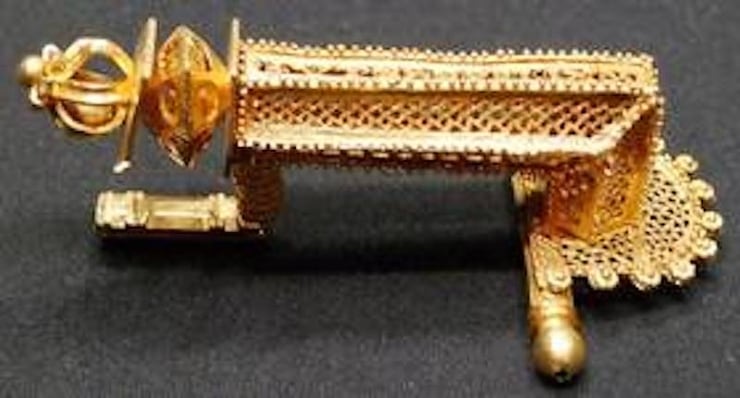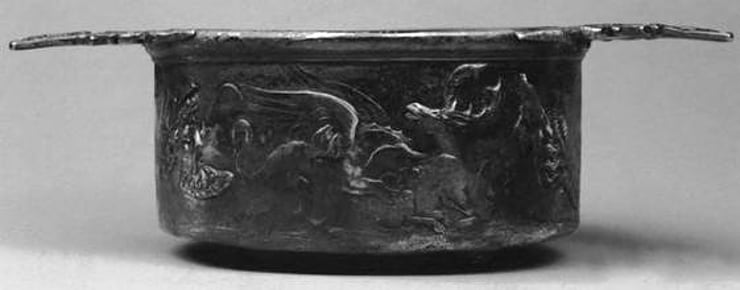A ze vraj na Vychode nic nie je.
19 May 1790 Gold from the Germanic grave
Categories: Calendar
A Germanic grave full of silver and gold artefacts was discovered in the eighteenth century by two peasants in the eastern Slovak village of Ósztrópatak when they went to church. The grave contained beautiful objects such as gold pins, bracelets and necklaces. However, some of the artefacts were melted down in 1799. The treasure weighed over thirteen kilos.
In 1790, a Germanic grave was found in the eastern Slovak village of Ósztrópatak - today's Ostrovany in the Sabinov district. Archaeologist and former Hungarian MP Ferenc Pulzsky described the circumstances of the discovery.
He said that the grave was discovered by two peasants who went to the church. "They were taking off their shoes to cross the river, and one of them noticed something shiny. The peasants went to see what it was. They found a treasure that had been taken from them by the landowner," Pulzsky revealed.
The treasure eventually made its way to the then Vienna Attic Cabinet, but it was no longer whole. The commission selected and bought some exceptional artifacts. In particular, a gold necklet with an elaborately detailed cap, a gold bracelet, a magnificent clasp with a triple-layered onyx and gold chainsgold clasp with the inscription VTERE FELIX, a gold clasp decorated with filigree, a silver spoon or a large silver gift clasp.
Not only the composition of the depot was surprising, but also the total weight. The silver objects weighed almost 2.5 kilograms. But that was not the entire volume of this incredible treasure. Other exceptional objects were to be handed over to the private collection of the well-known art collector M. Viczay, but this did not happen in the end.
However, some of the objects were melted down in 1799, a truly great archaeological loss. Among these artefacts were a gold cup, four gold clasps, a gold wire, four silver bowls, a silver spoon and several silver fragments.
The total weight of the lost objects was an incredible 10.3 kilograms. In total, the treasure weighed over thirteen kilograms. This is one of the largest mass finds from the ancient period in the whole of Central Europe. Today, the remaining artefacts are housed in the Kunsthistorisches Museum in Vienna.
Source: http://www.archeologiask.sk


The article is included in categories:



